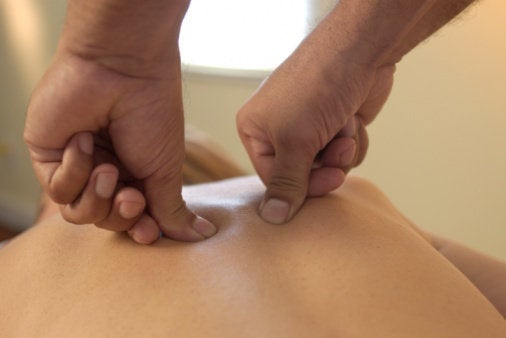
I'm all for alternative therapies to treat insomnia and enhance sleep. I'm not sure what that word "alternative" means anymore because so many treatments labeled as such are mainstream today. And real studies employing the scientific method continue to emerge for a variety of what were once called alternative therapies.
Case in point: I just read about a new study confirming what we've long thought to be true: acupressure can improve insomnia, and the benefits can last up to two weeks after treatment.
How does this actually work?
To start, treatment using acupressure is based on the ancient art of using pressure points to align "chakras" in the body, thought to release the body's natural healing powers. According to this theory, the human body contains a life energy (also called chi or qi), which flows through meridians in the body. When this energy is flowing properly, a person can be healthy and the body can heal, but when the energy is not flowing properly, disease--and disturbances like insomnia--can occur. In essence, acupressure aims to "re-flow" the energy to support health.
Now that may sound far-fetched, but there's plenty of science--and lots of anecdotal evidence--to show that whatever acupressure does can actually relieve pain and help treat an array of conditions. Unlike acupuncture, which uses very fine needles, acupressure simply uses physical pressure applied to specific points on the body. This recent study looked at the "HT7" point in particular, which is located on your wrist.
For some insomniacs, trouble with sleep can be caused by an underlying medical condition that correlates with another acupressure point on the body. For example, someone whose back pain keeps them up at night may find relief with acupressure at the spot linked to relieving that kind of pain, and so on.
Often, using your pain's associated acupressure points can be even more helpful at alleviating insomnia than focusing only on the acupressure points that are solely for insomnia--which, by the way, go beyond a secret spot on the wrist.
The "Shimien" is famous for its relationship with relieving insomnia (some may call it the "insomnia" point). This acupressure point is located on the bottom of your foot; if you were to draw a line from both of your ankle bones to the sole of your foot, the point is where these lines overlap at the mid-line of the sole (just above the heel of the foot). It's the most tender spot in this area.
But I don't encourage you to try acupressure on yourself. This is where having a qualified acupressure therapist is key.
When you consider all the other drug-free strategies for restful sleep, you'll find that the vast majority of techniques used to support sleep hygiene could be considered "alternative", such as:
- Aromatherapy: employing the power of scent to lull you to sleep.
- Sound machines: employing the power of white noise.
- Taking a warm bath or sitting in a hot tub or sauna before bedtime.
And my favorite one of all: quitting all forms of work and stimulating activities within an hour of bedtime and just relaxing. And there's nothing "alternative" about that.
Sweet Dreams,
Michael J. Breus, PhD
The Sleep Doctor™